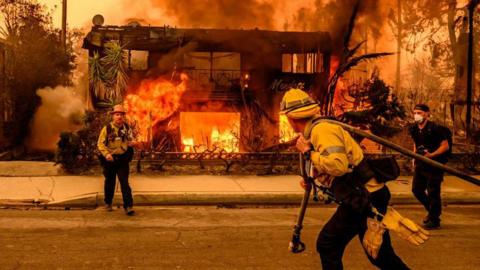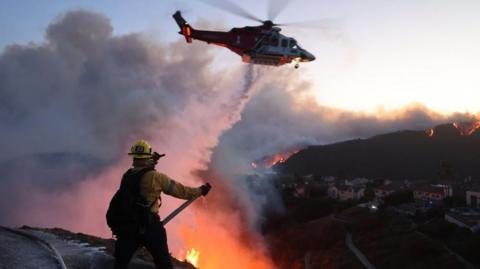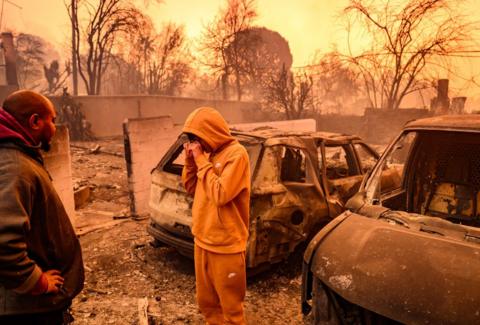Around 30 people have died and more than 10,000 homes have been destroyed in the fast-spreading, destructive fires that broke out in early January.
This new study looks at what are termed the fire-prone conditions that can lead to dangerous conflagrations.
It's been carried out by a team of researchers from World Weather Attribution (WWA), a global group that publishes rapid analyses of climate-related weather events.
They use climate models to simulate how the warming that has occurred since the middle of the 19th century is influencing heatwaves, droughts, floods and fires.
The widespread burning of coal, oil and gas in the wake of the industrial revolution has driven billions of tonnes of planet-warming gases into the atmosphere.
Acting like a blanket, these gases have driven up temperatures by around 1.2C since then.
By using climate models and statistical methods along with real world observations, the WWA group have been able to show how much of an influence climate warming has had on extreme events.
In the case of the LA fires, they found that the hot, dry conditions that drove them are expected to occur once every 17 years.
This is an increase in likelihood of around 35% compared to a world that hadn't experienced warming.
"We actually see that the models show very much the same results that the [real world] observations have," said Dr Friederike Otto, the head of World Weather Attribution.
"So there, in this combined index, we are quite confident about the result... we have actually a signal that we can say that we definitely can attribute that, also quantitatively."
The researchers also examined other important variables that can lead to wildfire including the length of the fire season.
By analysing weather observations, the scientists found that this has increased by around 23 days since the world began warming, around 1850.
The team say that this means the dry conditions and the Santa Ana winds that are crucial for the spread of fires, are increasingly overlapping.


